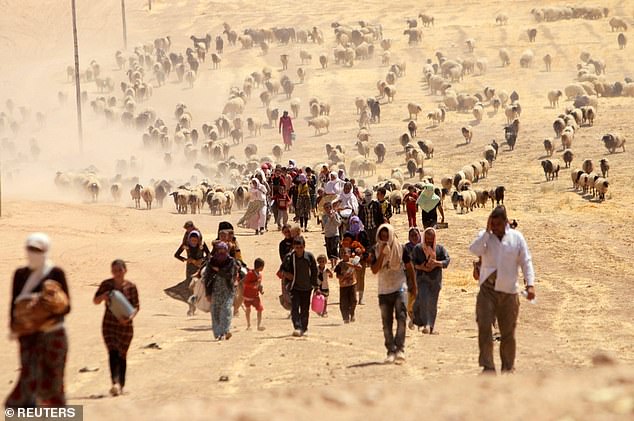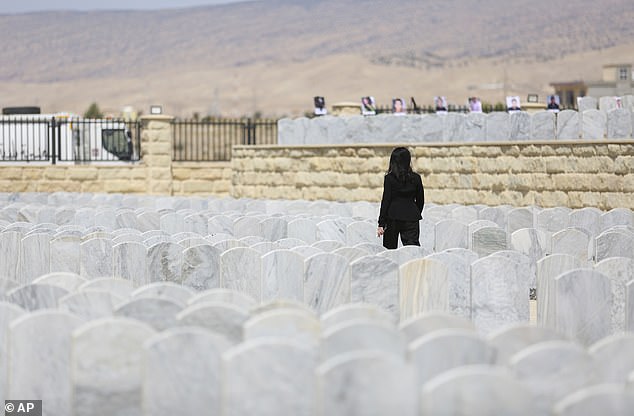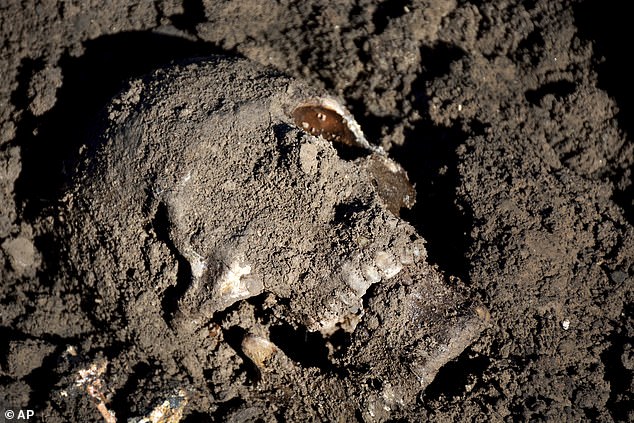Yazidi ISIS prisoner describes horrific ordeal as sex slave, including rape of children as young as 10, horrific beatings and complicity of other women
A rescued ISIS sex slave has courageously described her horrific ordeal of being raped and abused daily by the terror group, seeking justice for her victims.
Kovan, now 24, was only 14 when she was captured in the Al Hol camp after IS collapsed under US pressure in March 2019.
She told Sky News of her harrowing abuse by soldiers in hiding, who have been sold several times through IS territory and have witnessed the rape of children, sometimes even ten years old.
The first man who “bought” her was twice her age and raped her only daily for two years, she told the newspaper.
When she tried to run away, he dragged her by her hair and said he would kill her and “bury me in the backyard if I didn’t do what he wanted.”
Kovan courageously told Sky News about her horrific ordeal when she was sold into sex slavery by ISIS

She said the women were complicit in the abuse by preparing prisoners for rape.

Displaced Yazidis fleeing ISIS violence walk toward the Syrian border in 2014

File photo. Islamic State fighters ride through the streets of Mosul, Iraq in 2014
Kovan told Sky News she had not even had her period when she was “bought” by an IS soldier.
She said she felt like she was being attacked because she was a Yazidi, referring to the religious group originally from the Kurdish regions of Iraq, Syria, Turkey and Iran.
Yazidis, and the Kurdish population in general, have suffered terrible abuse and persecution from neighboring populations for centuries.
In 2014, ISIS invaded the Yazidi’s ancestral homeland of Sinjar, killing thousands of people and trafficking thousands more young women and children into slavery.
According to the Public Library of Science journal PLOS Medicine, within days nearly 10,000 people had been murdered — shot, beheaded or burned alive — or kidnapped.
Ten years later, as survivors in refugee camps commemorate the anniversary of the genocide, many of them are still missing or cannot be identified in the dozens of mass graves that have been discovered.
Kovan was rescued by the Syrian Democratic Forces during a daring raid on Al-Hol.
But even now, she still cannot return home. She is among the thousands of victims scattered across tent camps in Iraq, while Sinjar remains in ruins.
As the Islamic State’s grip on the region waned, Kurdish authorities took responsibility for the children Kovan gave birth to as a result of rape, fearing for their safety.
She said both her children were born from rape by two men from the group.
Kovan thinks they are both dead.
She said it was heartbreaking for her to be separated from her children and she broke down as she said, “I love them, of course.”
This week, many Yazidis gathered to commemorate the anniversary of the Yazidi genocide, which was carried out on August 3, 2014 by the so-called Islamic State.
Also on Saturday, many gathered at a memorial event in Solagh, Sinjar, to observe a minute’s silence and sing traditional songs.
A large crowd gathered at the ‘grave of the mothers’, where 111 elderly women were shot dead or buried alive during IS’s horrific campaign.
It is believed that between 350,000 and 450,000 Yazidis were displaced from the Sinjar district during the tragedy, who are labelled as ‘devil worshippers’ by IS.
Mass graves continue to be found and uncovered, providing evidence of crimes against humanity and war crimes committed by the terrorist group.
Today there are more than 6,000 women and children are believed to be prisoners of IS, and thousands are still missing. Sky reports the number is closer to 3,000.
According to the International Organization for Migration (IOM), nearly 200,000 Yazidis remain displaced as a result of the genocide.
Because conditions in Sinjar remain dire, hundreds of survivors have fled Iraq through programs run by Germany, Australia, the US, Canada and the Netherlands.
Since 2021, Iraq has recognized the genocide and provided compensation to the victims in the form of a monthly income, land, and access to health care, livelihoods and education.
But by September 2023, it was reported that only 1,052 survivors had received reparations. Delivering support remains a challenge.

An Iraqi Yazidi woman mourns her relatives during a genocide commemoration in Sinjar

A Yazidi woman visits relatives at a cemetery during the commemoration in Sinjar on August 3

Yazidis in Khanke prepare to return to their homes in Sinjar on June 24, 2024

A human skull in a Yazidi mass grave in Sinjar, pictured in 2015 after the IS genocide
Yazidi lawyers today called for restorative justice in their fight for reparations.
“What we really need from Iraq and the KRG (Kurdistan Regional Government) with the support of the international community is a proper legal framework for transitional justice,” said Natia Navrouzov of the Yazda organization, which supports the victims, as the victims commemorated the anniversary.
‘All the components of transitional justice. So, criminal accountability, truth-finding, reparations.
“And what is really missing are guarantees of non-recurrence. People are asked to go back, but there is no guarantee that in five, ten, two years there will not be another genocide.”
